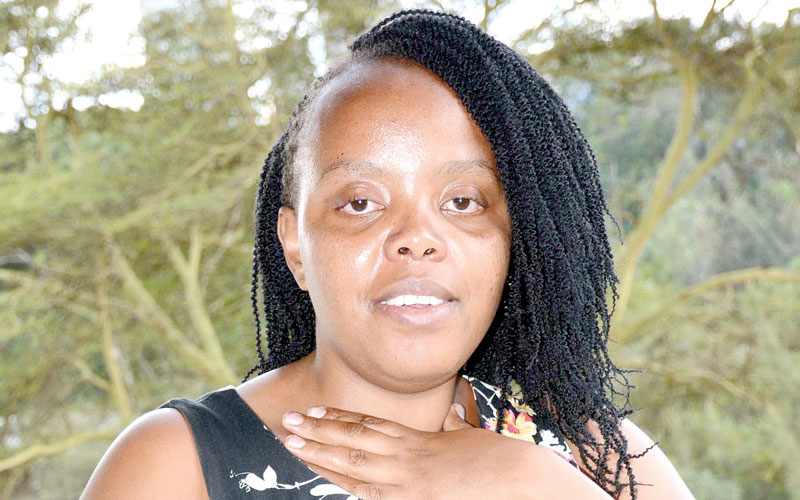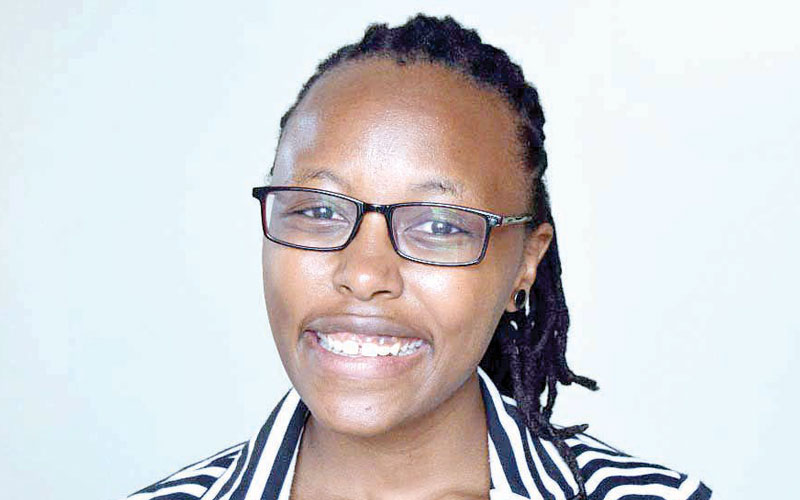Cerebral palsy: Notorious robber of mobility among children
By Njambi Wanjiku, October 28, 2019Joyce Wanjohi’s prolonged labour came at a high price. Her son, Nathan Maina developed the most severe form of cerebral palsy (CP) known as spastic quadriplegia, a condition that causes stiff muscles in all four limbs.
Nathan spent the first two weeks of his life in the Intensive Care Unit (ICU). He was not moving or making any sounds, but doctors assured Joyce he was still alive because the machines were beeping.
“Eventually, he woke up, but I was not allowed to hold him lest I infect him with something.
Nathan was transferred to the nursery, but I was still prohibited from breastfeeding him since he was still in the incubator.
I was asked to start expressing milk for him, but his suckling reflex was slow,” Joyce says.
After a month, Nathan’s doctor informed Joyce her son would have delayed milestones. She figured the worst was behind them and took him home.
Three months later, after having a series of seizures, Nathan was diagnosed with CP during an appointment with a paediatrician.
“I had to figure out how to manage the condition because the doctor did not provide any guidelines on how to deal with CP. I also had to figure out his diet and the feeding schedule,” she says.
Cerebral palsy is the most common cause of severe physical disability in childhood, occurring in approximately two in 1,000 live births globally, according to a study by the Centre for Disease Control and Prevention (CDC).
There are no official statistics on the prevalence of CP in Kenya, but experts estimate that about three in 100 children are living with the condition.
The Cerebral Palsy Society of Kenya (CPSK) says CP is a physical disability that affects movement and posture.
It is an umbrella term that refers to a group of disorders affecting a person’s ability to move. CP is caused by abnormal development of part of the brain or by damage to parts of the brain that control movement.
This damage can occur before, during, or shortly after birth. Possible causes of abnormal development of part of the brain include genetic abnormalities, congenital brain malformations, maternal infections, fevers, or foetal injury.

Although the prevalence of CP appears to have stabilised globally in the past two decades, recent studies show severe cases may be decreasing.
The term cerebral refers to the brain and palsy refers to the loss or impairment of motor function.
A majority of children have Congenital CP, meaning they were born with it, although it may not be detected until months or years later. A small number have Acquired CP, which means the disorder begins after birth.
Some causes of Acquired CP include brain damage in the first few months or years, brain infections such as bacterial meningitis or Viral Encephalitis (inflammation of the brain), problems with blood flow to the brain, or head injury from a motor vehicle accident, a fall, or child abuse.
Spastic Quadriplegia is the most severe form of CP and is often associated with moderate to severe intellectual disability.
It is caused by widespread damage to the brain or significant brain malformations. Children will often have severe stiffness in their limbs and a floppy neck.
They are rarely able to walk. Speaking and being understood is difficult. Seizures can be frequent and hard to control.
In 2015, Joyce decided to try out Stem Cell Therapy (SCT) —the use of stem cells to treat or prevent diseases— on Nathan.
“I researched the procedure and asked around for parents who had tried the treatment. They recommended it, so I felt we should try it out, but it fell through.
The hospital, based in India, told us that they do not offer stem cell treatment when we arrived, yet in our correspondence prior to the trip, they said that they did.
I figured out on the second day there that I had been duped. To make matters worse, the doctor advised me not to even bother with Nathan’s treatment because he would be a burden if I chose to keep him,” she explains.
Stem cell therapy
Two years later, Nathan underwent stem cell therapy in a different hospital in India without a hitch.
“The treatment has helped Nathan. He eats blended balanced food every three hours since he still takes little quantities. He is more aware, like someone who has woken up.

While doctors recommend that you go back after six months, then after one year for the treatment, it is very expensive. Today, I can tell whether a cough is a sign of a cold or a convulsion.
I have been lucky to have nannies who have loved my son as he is and took care of him without any issues. I am, however, careful since he is on medication, a nanny must know how to read,” she says.
Joyce believes the introduction of SCT in the country would improve the lives of special needs children and reduce their dependency on doctors.
“Children with CP require regular check-ups and have to see a neurologist. The slightest ailment requires medicine. There is a shortage of Rivotril 0.5mg, used to treat seizures.
Two weeks’ worth of medication is approximately Sh5,500, which is very costly. There is also speech therapy, physiotherapy, occupational therapy and it is a lifetime thing,” Joyce adds.
Milliam Njeri found out her three-year-old daughter, Mirabel Wanjiru, had CP in 2016 after she was misdiagnosed with constipation more than five times.
After a smooth pregnancy and delivery, Milliam had to take her daughter to the hospital when she was just three weeks old. Her doctor said Mirabel had low blood sugar and had contracted Meningitis.
The news took a toll on her and led to depression. She was unable to breastfeed her daughter and was forced to wean her when she turned a month old.
At five months, Mirabel started having seizures, with the attacks getting worse at seven months. Mirabel would convulse up to 10 times a day
“When I took her to hospital for the umpteenth time, I found a new doctor who, just like the old one, though she was constipated, but after Mirabel got an attack in her presence, the doctor sent us to Mathari Hospital for an electroencephalogram (EEG), a test used to find problems related to electrical activity of the brain,” Milliam says.
Mirabel was diagnosed with CP and occupational therapy recommended as part of treatment, but since Milliam was in denial, she ignored the doctor’s advice.
When the attacks increased in number and frequenct, a friend encouraged Milliam to take her daughter to Kenyatta National Hospital (KNH) for treatment.
“The doctor detected Mirabel’s vision had been affected and recommended occupational therapy, which she started soon afterwards.
A session can take 20 to 30 minutes and costs between Sh600 and Sh1,000, depending on the time a therapist spends with a child.
Mirabel has weekly therapy sessions and also takes Epilim syrup for the treatment of epilepsy and Rivotril, which both cost Sh1,350,” said Milliam.
The therapy has seen much improvement in Mirabel. “She now feeds on mashed food and porridge. She is able to drink water on her own using a feeding bottle.
Parents with children living with disabilities should never give up on them. They should research widely on their children’s condition and consult specialists to avoid being duped,” Milliam adds.
Steven Munyi, a Paediatric Neurologist at KNH, notes CP is a life-long condition, but generally does not worsen over time.
Birth factors such as breech presentation where a baby is born feet-first and babies who weigh less than 2.5kg are at higher risk of developing CP. This risk increases as birth weight drop.
Risk of CP increases with the number of babies sharing the uterus. If one or more of the babies die, the survivors’ risk of the condition increases. Premature babies born less than 28 weeks are at higher risk of CP.
“As a child grows older, certain symptoms may become more evident. CP affects individuals in different ways and can affect muscle control, coordination and tone, body movement, reflex, posture and balance.
Muscle weakness, spasticity and coordination problems can contribute to a number of complications either during childhood or in adulthood, such as contracture (shortening of muscle tissue due to severe muscle tightening (spasticity)),” Dr Munyi explains.
Contracture can inhibit bone growth, causing bones to bend, and result in joint deformities, dislocation or partial dislocation.
Some type of premature ageing will affect most people with CP in their 40s because of the strain the condition puts on their bodies.
For babies with CP, nutrition is affected. “Swallowing or feeding problems can make it difficult for someone who has CP, particularly an infant, to get enough nutrition.
This can impair growth and weaken bones. Some children need a feeding tube to get enough nutrition,” he explains.
Other issues that accompany CP include mental health conditions, such as depression; heart and lung disease and breathing disorders; early onset of osteoarthritis due to pressure on joints or abnormal alignment of joints from muscle spasticity; fractures due to low bone density arising from factors such as lack of mobility, nutritional shortcomings and anti-epileptic drug use.
Visual, learning, hearing, speech, epilepsy and intellectual impairments are also common in people with CP.
No cure yet
“CP does not always cause profound disabilities. While one child with severe CP might be unable to walk and need extensive, lifelong care, another child with mild CP might not require any special assistance.
There is no cure for the condition, but supportive treatments, medications, and surgery can help many individuals improve their motor skills and ability to communicate with the world.
Pregnant women should avoid alcohol, tobacco and illegal drugs as they have been linked to CP risk. They should seek early and continuous prenatal care to reduce health risks to themselves and their unborn children.
Expectant mothers should also be vaccinated against diseases such as Rubella, preferably before getting pregnant to avoid an infection that could cause foetal brain damage,” Munyi added.
